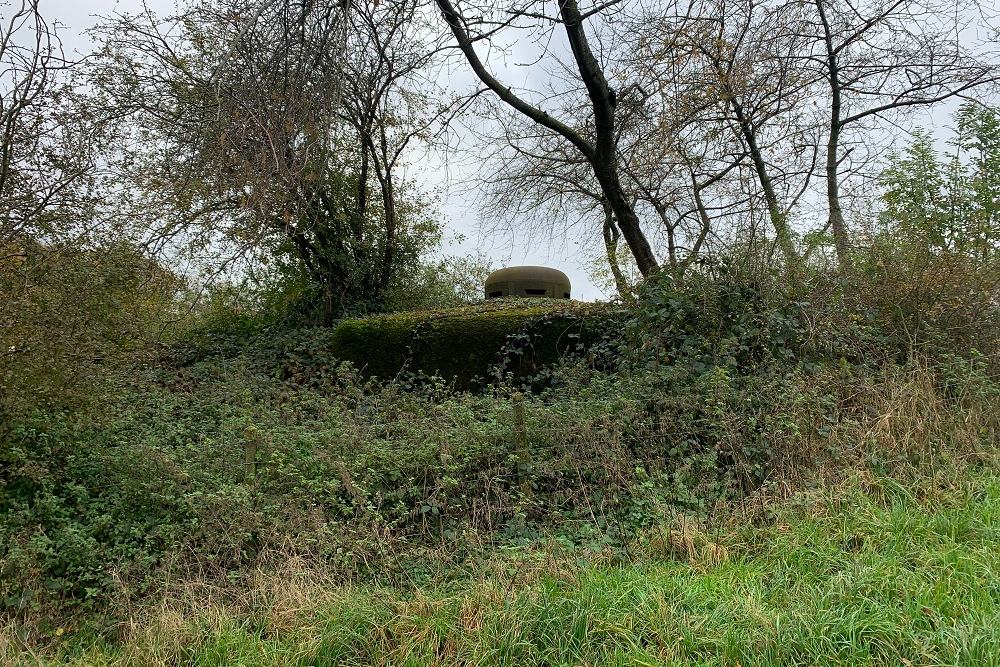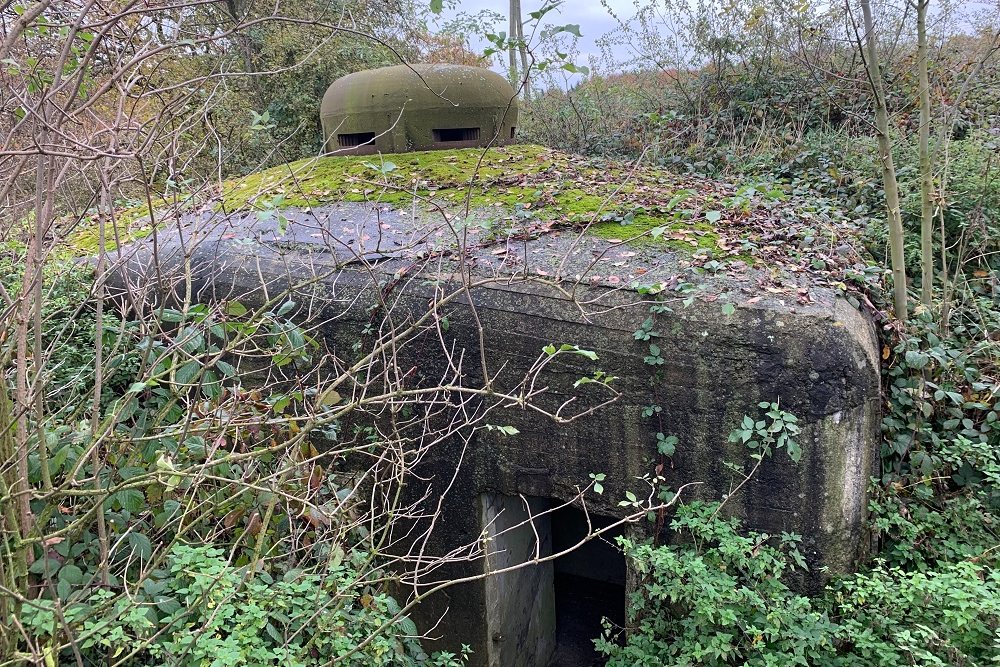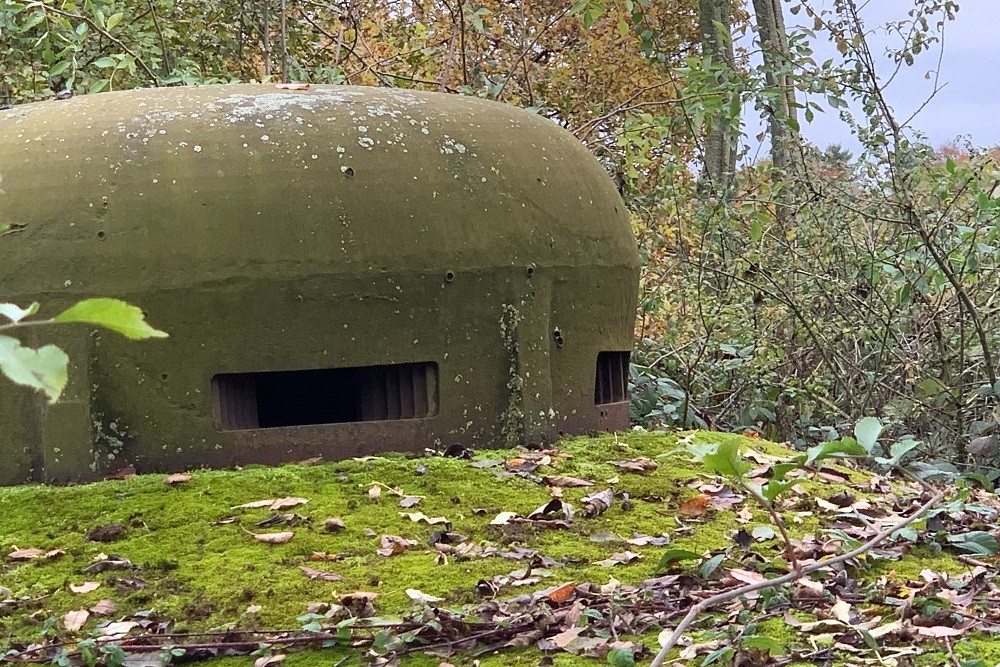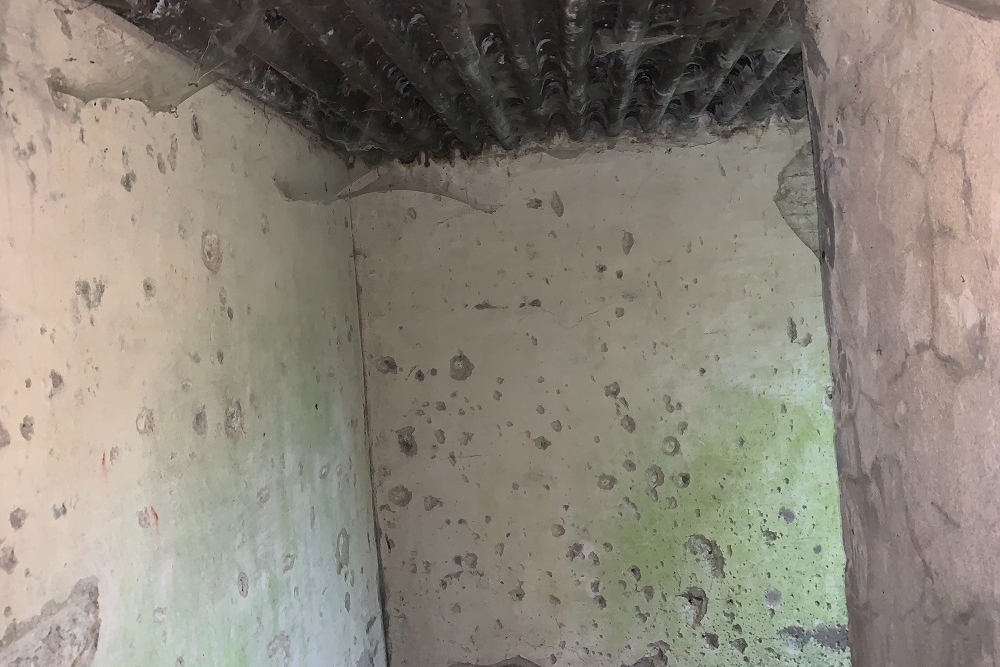Bunker NV 2 Neufchâteau
This is bunker NV 2 from sector Neufchâteau-Visé from the 1st line of defence for the city of Liège, la Position Fortifiée de Liège 1 (PFL1) and belongs to fort Neufchâteau. It is the 2nd bunker from this sector. In front of fort Neufchâteau, it is observation post OP 369.
It is one of the fort's four observation bunkers and is therefore equipped with a turret. In this case, of the "F.M." type. Unlike the other observation bunker with turret NV5, this one is is equipped with a periscope. The other two observation bunkers were bunker MN 11 and bunker MN 18 from the Les Margarins-Neufchâteau sector.
In most bunkers, either during the war or after the war, the turret and all other steel present was removed. During the war, the Germans used these turrets for their Atlantic Wall defenses. The other steel was melted down and reused. If the dome had survived the war, it was sold as scrap once the bunkers had lost their strategic value to the Belgian army. As was all the other steel present from the doors and hatches.
Extraordinary that in this case this bunker still has its turret. The dome shows battle damage (photo 3). Several bullet impacts are observable. The bunker has been involved in fighting on and around May 10th and 11th, 1940. Also the access area in front of the 2nd steel door still shows several bullet impacts (photo 4).
From May 10th, 1940, the bunker was in combat with the Germans, who wanted to put Fort Neufchâteau out of action. On May 17th, the fort reported that it had already fired over 6,700 shells. Bunker NV 2 was then already taken by the German attackers on May 11th.
The hooks on the walls are shelf supports. These were made of wood and were removed and reused after the war. It was vital that items in the bunker were hung on shelves and equipment, for example, on hooks. Space was limited.
The walls of the bunkers from the PFL line were 1,3 meters thick, and of reinforced concrete. They could withstand shelling with 150 mm shells. They were equipped with two steel doors. Only a few bunkers were connected to the power grid. Most had to be lit with storm lamps.
The bunkers were built in the early 1930s.
Do you have more information about this location? Inform us!
Source
- Text: Ed Lewandowski
- Photos: Ed Lewandowski
- La Position Fortifiée de Liège
- 18daagseveldtocht.be
Nearby
Museum
- Fortress Aubin-Neufchâteau - Neufchateau (Dalhem)
- Museum of the Fort Aubin-Neufchâteau - Neufchâteau (Dalhem)
- Fort Battice - Fortified Position Liège - Battice (Herve)
Point of interest
- M27 Pershing Tank - Neufchâteau (Dalhem)
- Railway overpass Sint-Martens-Voeren - Sint-Martens-Voeren (Voeren)
- Val Dieu Abbey - Aubel
Monument
- War Memorial Neufchâteau - Neufchâteau (Dalhem)
- Memorial 740th Tank Battalion U.S. Army - Neufchâteau (Dalhem)
- Memorial Fort Aubin-Neufchâteau 1940 - Neufchâteau (Dalhem)
Cemetery
- Belgian Graves Veterans Sint-Martens-Voeren - Sint-Martens-Voeren (Voeren)
- Commonwealth War Graves Sint-Martens-Voeren - Sint-Martens-Voeren (Voeren)
- Belgian Grave Resistance Member Jules Goffin - Voeren
Remembrance Stone
- Stumbling Stone Rijksweg - Eijsden
- Stumbling Stone Joseph Partounsstraat - Eijsden
- Stumbling Stone Kapelkesstraat 14 - Eijsden
Fortification
- Bunker NV 1Neufchâteau - Neufchâteau (Dalhem)
- Bunker NV 3 Neufchâteau - Neufchâteau (Dalhem)
- Fort Aubin Bloc P Neufchâteau - Neufchâteau









